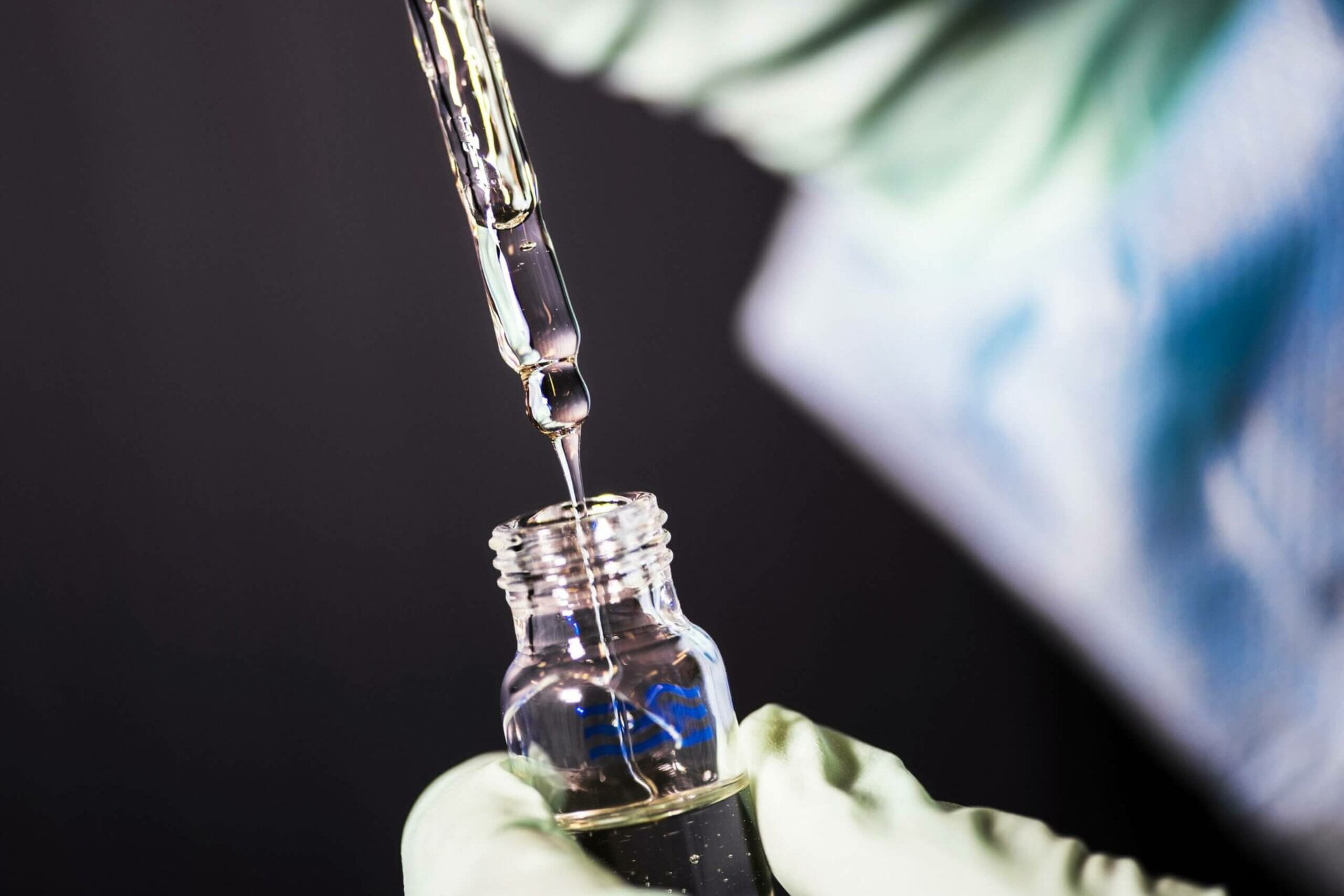Medical Devices 101 // Mechanical Ventilators

DATE
November 27, 2020
AUTHOR
Tereza | Senior Customer Success Manager
What are mechanical ventilators?
A mechanical ventilator is a medical device that helps a patient breathe by moving air in and out of their lungs. It is used when a patient cannot physically breathe (e.g. during surgery) or isn’t breathing sufficiently (e.g. due to a critical disease). Modern ventilators are computerized machines which are controlled by a microprocessor. It is also possible to ventilate patients with a simple, hand-operated bag valve mask.
Ventilators are mainly used in intensive-care, homecare, and emergency medicine and in anesthesiology, as a component of an anesthesia machine. Sometimes, ventilators are also called “respirators”, a term which was often used back in the 1950s. Contemporary hospital and medical terminology, however, tends to use the word “respirator” to refer to a protective face-mask.
According to Grand View Research, the global mechanical ventilator market size was valued at USD 2.06 billion in 2019 and is expected to grow at a compound annual growth rate (CAGR) of 4.7% from 2022 to 2027. In the spring of 2020, the COVID-19 pandemic caused demand for mechanical ventilators to skyrocket, and many players from other industries subsequently started building them, too. In addition to COVID-19, a rise in prevalence of other respiratory diseases, increase in urbanization, pollution levels, and the high prevalence of tobacco smoking are key factors driving the market. Furthermore, a rise in the demand for homecare therapeutics and economic expansion witnessed in developing countries (such as China, India and Brazil) are fuelling the demand for these devices.
Here are some of the key players in the mechanical ventilator market:
- Getinge AB
- Medtronic
- Vyaire Medical Inc.
- Drägerwerk AG & Co. KGaA
- Koninklijke Philips N.V.
- Hamilton Medical
- GE Healthcare
- Smiths Medical
Mechanical ventilators are relatively high-risk devices and are classified as IIb. This blog post discusses different aspects of mechanical ventilators and what manufacturers need to be aware in terms of the EU MDR.
How are ventilators used?
Ventilators have an input or power source, which can be based on electrical energy or compressed gas. Since ventilators must never lose power, which would be life-threatening for the patient, some also have A/C power lines with rechargeable batteries. Patients are connected to the ventilator with a hollow tube which is inserted into their mouth or nose and down into their main airway or trachea. A laryngoscope is used to help intubate the patient. A mixture of air and oxygen is then pushed into their lungs. In addition, a humidifier helps to warm and moisten the air going into the patient. The ventilator can also hold a constant amount of low pressure, called positive end-expiratory pressure (PEEP), in order to prevent the lung’s air sacs from collapsing. Patients receive medication to relax their respiratory muscles and allow their breathing to be regulated entirely by the mechanical ventilator. They will remain on the ventilator until they are able to breathe sufficiently by themselves.
COVID-19 and mechanical ventilators
According to the World Health Organization (WHO), around 80% of people with COVID-19 – the disease which is caused by the coronavirus – recover without having to go to hospital. However, one person in six becomes seriously ill and requires treatment. In severe cases, the virus damages the patient’s lungs, and as a result, the body’s oxygen levels drop and it becomes harder for the patient to breathe. This is where ventilators are needed to help the patient breathe artificially. As a result, manufacturers ramped up production of their ventilators in the spring of 2020, amid a surge in demand from severely ill COVID-19 patients.
What are the minimum requirements for ventilators?
Ventilators must be able to keep working 100% of the time for at least 14 consecutive days. They also need to be intuitive to operate, requiring no more than 30 minutes of training for medical professionals who already have ventilator experience. Finally, they must be small and light enough to attach to a hospital bed, but robust enough to survive dropping from a bed onto the floor.
What’s the new process for certifying and monitoring ventilators under EU MDR?
As class IIb medical devices, which represent around 8% of the medical device market share, mechanical ventilators are subject to several important legal requirements. The next section will look at what changes can be expected under EU MDR law compared to MDD (Medical Device Directive).
Conformity Assessment
Conformity Assessment is all about determining whether a medical device complies with the MDR’s demands. The Conformity Assessment for CE marking (Chapter V Section 2) of medical devices varies according to the device’s risk class and specific features of certain devices (Article 52). For mechanical ventilators, manufacturers must either have a robust Quality Management System (QMS) in place which is compliant with ISO 13485 or Annex IX, OR they must follow Annex XI.
Furthermore, ventilators require a type examination, as described in Annex X (if Annex IX is not followed). This type examination is meant to show that the manufacturer is actually developing a medical product. Before taking the ventilator to market, the device manufacturer’s Notified Body shall verify the ventilator’s conformity with the “general safety and performance requirements”. Manufacturers should plan for delays in this respect: There is currently a shortage of MDR-certified Notified Bodies in the EU and many major Notified Bodies have only just become licensed as MDR-compliant, meaning they are facing a huge influx of MDR applications.
Post-Market Surveillance
The EU MDR’s aim is to ensure devices’ performance and safety throughout their entire lifecycle, including once they are being used on the market. The idea behind this is that some risks may not become evident until a device is actually being used in a real-world healthcare environment. So, in addition to reducing the risks posed by mechanical ventilators and ensuring their safety before they’re on the market (through Conformity Assessment with a Notified Body), manufacturers should continue to monitor their ventilators’ performance within the market, too.
Enter Post-Market Surveillance (PMS). This process’s aim is to systematically identify these risks, verify the performance of the products “in the field”, find potential defects or undetected security problems, update the benefit-risk assessment on a continuous basis, and initiate any necessary measures (e.g. product callbacks in the case of S(AE)s. Although the responsibility of PMS lies with the ventilator’s manufacturer, they can make dealers of their products provide data for their PMS as well.
Proactive and Reactive PMS
Post-market activities can be both proactive and reactive.
Proactive PMS is aimed at anticipating or preventing a serious incident before it occurs. Some examples include specialist groups, surveys among product users (in this case, the doctor or medical professional), registries, or Post-Market Clinical Follow-up (PMCF) studies. The objective is to gain real data about the ventilator’s real-world performance. Analysing and reviewing the data is part of the risk management process and needs to be conducted on a routine basis.
Reactive PMS, on the other hand, which is also called “Vigilance”, means responding after an incident has occurred, e.g. a complaint by a product user, an injury or – in extreme cases – the death of a patient due to the device.
The main risk of mechanical ventilation is an infection, as the artificial airway could allow germs to enter the patient’s lungs. The longer the ventilation is needed, the higher the risk of infection. A second risk is lung damage, either due to overinflation or repetitive opening and collapsing of the lungs’ small air sacs (“Ialveoli”). Sometimes, patients cannot be weaned off a ventilator and may require extended support. In these cases, the tube is taken out of their mouth and changed to a smaller airway in the neck (“tracheostomy”). Finally, the use of a mechanical ventilator can extend the patient’s dying process if they are considered unlikely to recover. (Source: Cleveland Clinical)
Clinical Evaluation Report
As part of their EU MDR preparation, ventilator manufacturers must also assess their Clinical Evaluation Reports (CER) for all ventilators with a CE marking. In this regard, they are advised to cross-check equivalent device data used in previous literature reviews to ensure they meet the more stringent definition of “equivalence” under EU MDR law. The CER should be updated at regular intervals, whereby the frequency is defined and justified for each product category, in case there is more than one. This report must be updated when new PMS data could affect the CER conclusion. And in the case of ventilators as high-risk devices, updates are required on an annual basis.
Article 61, Clause 11
The clinical evaluation and its documentation shall be updated throughout the lifecycle of the device concerned with clinical data obtained from the implementation of the manufacturer’s PMCF plan in accordance with Part B of Annex XIV and the post-market surveillance plan referred to in Article 84.
Periodic Update Safety Report
A Periodic Safety Update Report (PSUR) is required for ventilators when and as needed, and at least once per year. The PSUR must also be delivered to the authority (upon request) and the appointed body. It is not mandatory to submit it to the EUDAMED database. A PSUR should follow this structure:
- Meta information including references
- Plan implementation
- Product data (including sales, indications, patients)
- Overview of data (including adverse events)
- Results of analysis (including trends)
- Overview of actions taken (including CAPA, vigilance, FSCA)
- Conclusions from the risk-benefit ratio
- Final assessment
Source: Johner Institut.
Post-Market Clinical Follow-up
Finally, Post-Market Clinical Follow-up (PMCF) is part of proactive Post-Market Surveillance. This continuous and mandatory process is aimed at collecting clinical data on a ventilator in the context of its intended use. It should confirm the safety and clinical performance of the ventilator on an ongoing basis. The data generated from PMCF about a ventilator in the market shall prove that its identified risks are still acceptable compared to its benefit to the patient. The methods for conducting PMCF depend on factors such as the general availability of clinical data for the ventilator, its risk class (IIb) and the ventilator market situation. PMCF can consist of data gathered from the vigilance system, complaints, technical information and publicly available information, and does not refer to PMCF studies alone. One useful PMCF method for collecting clinical data on ventilators is the use of surveys which we’ll discuss in the next section.
Have you gone digital with your clinical data capture yet?
Our 2020 survey about the costs of the EU MDR for MedTech companies found that the new regulation requires a significant amount of resources on the part of manufacturers, particularly those selling high-risk devices:
- 67% have hired or are planning to hire at least one new employee to help them cope with the regulation
- Most of manufacturer’s time is spent on “understanding the new requirements” (cited by 68%), followed by “clinical evaluations and clinical studies” (63%)
- Most of their money is invested in clinical evaluation and clinical studies (cited by 75%), followed by PMS and PMCF activities (52%)
- Almost half (48%) think that the MDR is going to cost them more than 5% of their annual turnover (in our survey from the spring of 2020, it was only 32%)
Clearly, a particularly large amount of time and money is being invested into clinical studies and PMS activities for the EU MDR. And this is where companies could be tapping into the power of digital solutions. Paper-based systems, which are still being used by around half of the survey participants, are likely to struggle in future due to the strict regulatory requirements for data collection and also in cases of unannounced audits. An electronic data capture (EDC) solution is one of the few ways to save time and money, and ensure that devices are (re-)certified according to MDR law.
EDC solutions allow manufacturers to collect data on their ventilators in real-time. For example, QR codes can be printed on the device’s packaging for medical staff to scan with a mobile device. Once they have completed the survey – which can be done anytime and anywhere, the results are available within the manufacturer’s dashboard in real-time.
Want to find out how your company could be saving a lot of time and money with the help of an EDC solution? Get a free trial of Climedo now. No programming skills, no installation, no credit card.






